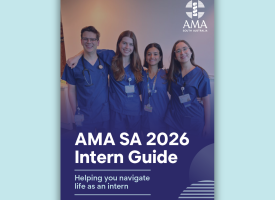AMA Pre-Budget Submission 2023-24 (Chapter 2: Public Hospitals)
The AMA Pre-Budget Submission 2023-24 (Chapter 2:Public Hospitals) calls for a recovery plan to address the backlog of elective surgeries, as well as long-term funding reform to build hospital capacity and clear the logjam.

Urgent reform of public hospital funding is needed. The AMA’s vision is for a new funding approach to supplement the current focus on activity based funding one that includes funding for positive improvement, increased capacity, and reduced demand, and puts an end to the blame game. While broader reform is needed in the long term, the AMA is calling for targeted reforms that are needed right now to stem the public hospital crisis. The AMA's four point plan includes:
- Improve performance: Reintroduce funding for performance improvement – for example, improvement in elective surgery and emergency department waiting times – to reverse the decline in public hospital performance.
- Expand capacity: Give public hospitals additional funding for extra beds (along with the staff) and support them to expand capacity to meet community demand, surge when required, improve treatment times, and put an end to ambulance ramping.
- Address demand for out-of-hospital alternatives: Fund alternatives for out-of-hospital care, so those whose needs can be better met in the community can be treated outside hospital. Programs that work with general practitioners to address avoidable admissions and readmissions should be prioritised.
- Increase funding and remove funding cap: Increase the Commonwealth government’s contribution to 50 per cent for activity, beyond the temporary COVID-19 specific partnership agreement. This represents an investment of $12.7 billion over four years between 2022-23 and 2025-26. Require states and territories to reinvest the 5 per cent of ‘freed-up’ funds to improve performance and capacity. Remove the artificial 6.5 per cent cap on funding growth that is shared between states and territories, so funding can meet community health needs based on realities on the ground. This represents an investment of $7.8 billion over four years between 2022-23 and 2025-26.



